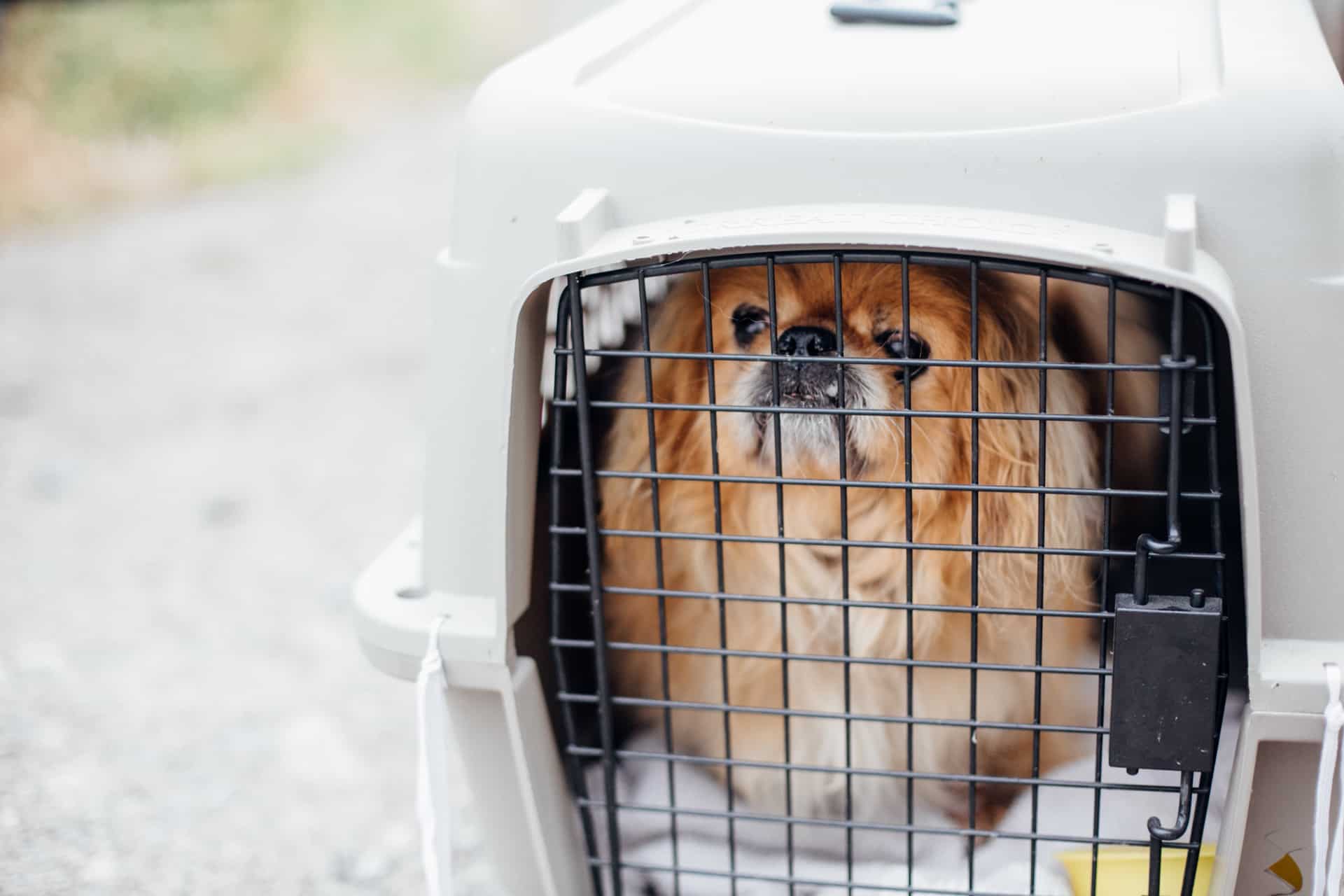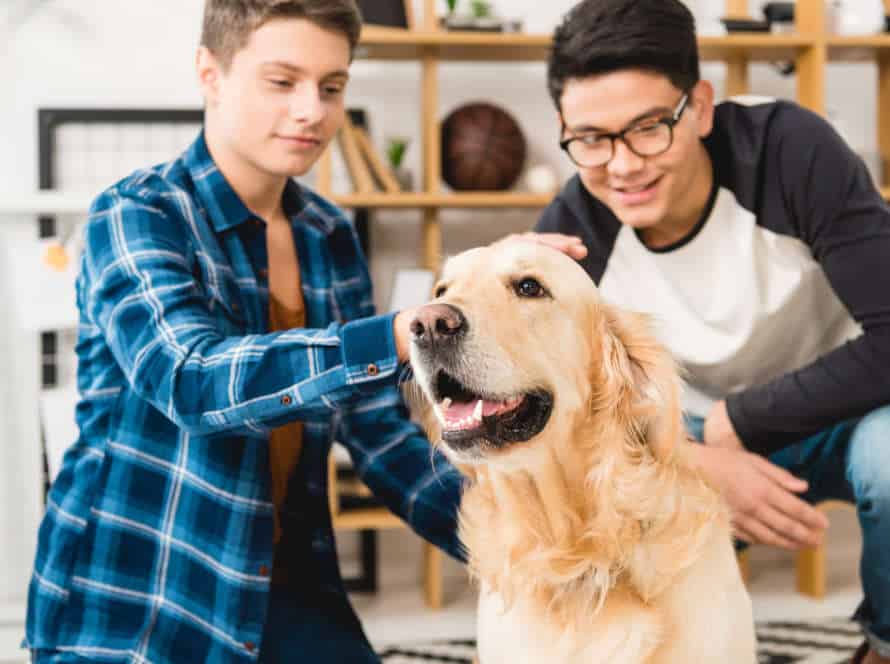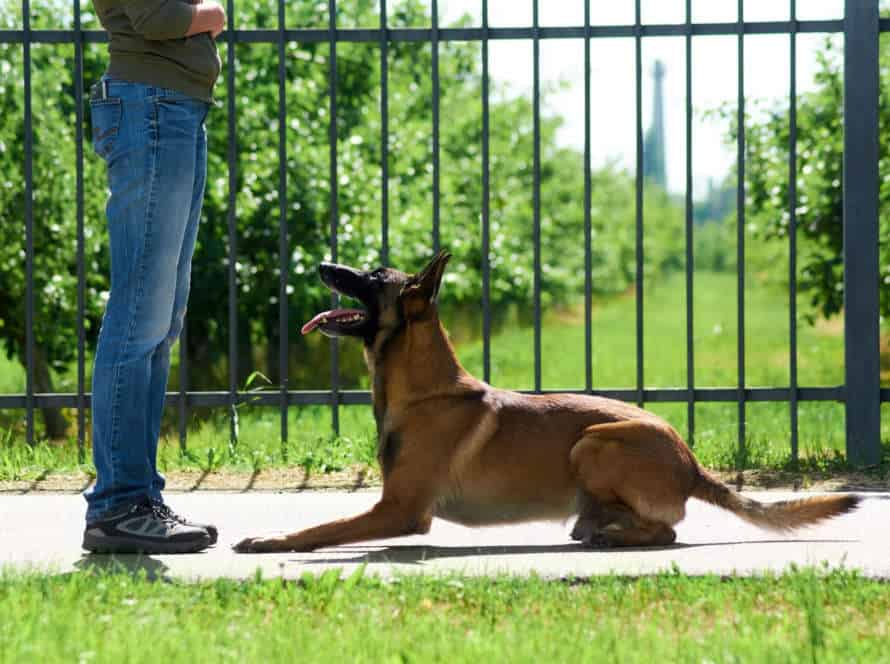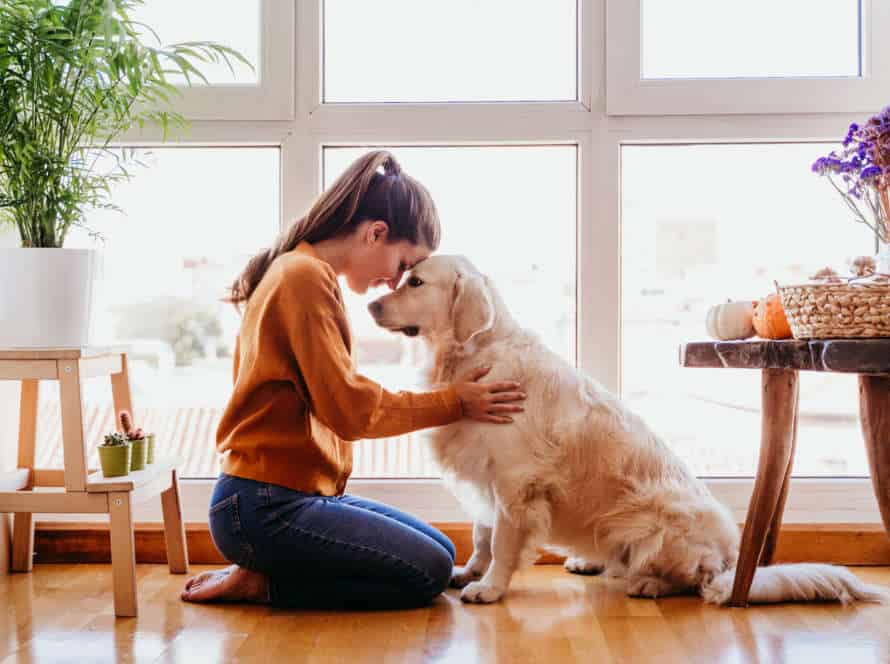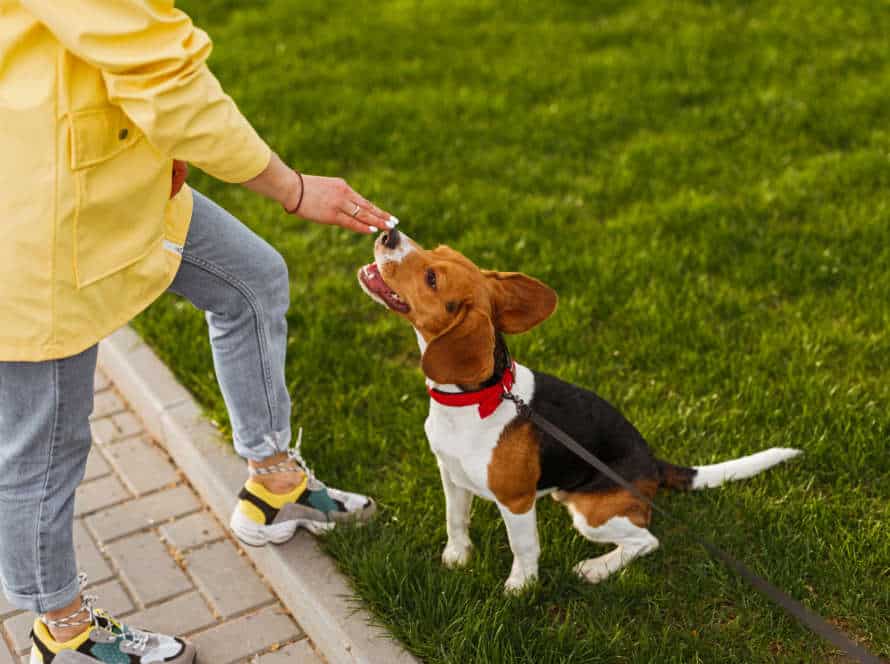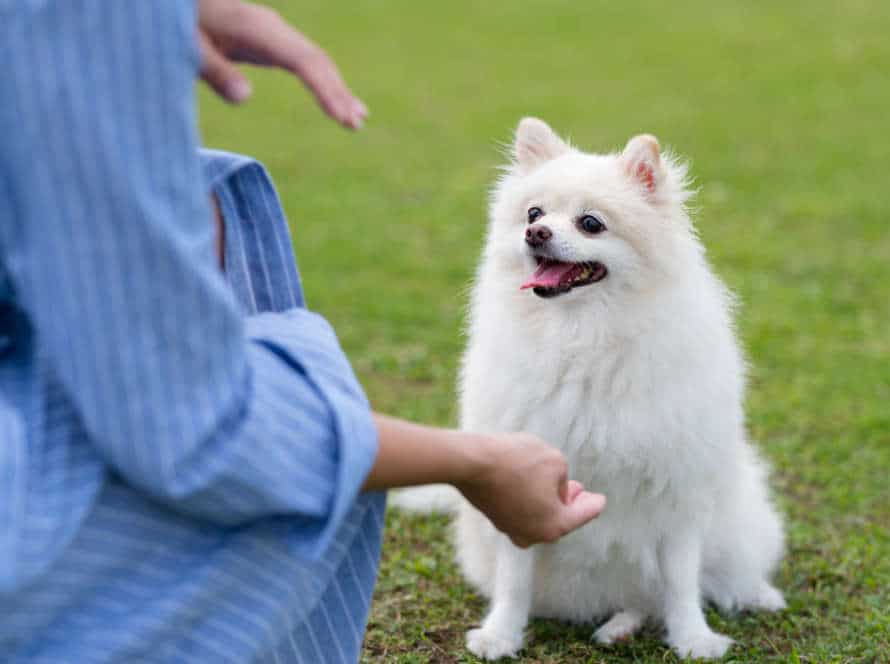Crate Training Your Rescue Dog: A Step-by-Step Guide
Crate training is important for newly adopted rescue dogs, as it gives them a cozy, safe spot to go. Here’s a guide to do it right:
- Choose a proper size and type of crate for your pup.
- Introduce your dog to the crate gradually, through positive reinforcement and treats.
- Encourage your pup to go in and stay there for longer.
- Start closing the door for brief periods while being near your dog. Increase the duration slowly.
- Set a consistent routine for crate training, including feeding and exercising.
- Never use the crate as punishment, and don’t force your pup inside.
With patience and constancy, your rescue pup will grow to love their crate, and will see it as a secure, comfy spot to rest.
Understanding Crate Training
Crate training is a great way to assist your rescue pup adjust to their new abode. It not only helps them feel safe and secure, but it also gives structure and consistency. When done right, crate training can help your doggo relax and love the coziness of their own space.
Let’s look at the steps for successful crate training:
- Choose the right crate size for your furry friend.
- Introduce your dog to the crate slowly and positively.
- Use treats and positive reinforcement.
- Make the crate comfortable and inviting with a cozy bed or blanket.
- Never use the crate as a punishment.
- Start with short periods of crate time and gradually increase.
- Set a routine and stick to it.
What is crate training?
Crate training is a great way to house-train dogs, especially rescue ones. It involves using a crate as a safe and comfy spot for your pup to chill and sleep in when you can’t watch them. Here’s a guide to crate-training your rescue pup:
- Choose the right sized crate.
- Make it a positive and comfy space.
- Use treats and positive reinforcement to get your dog to go in.
- Start with brief periods while you watch your pup.
- Gradually increase the time they spend in the crate.
- Never use the crate as punishment.
With patience and consistency, your rescue pup can learn to love their crate and see it as their own calming space.
Benefits of crate training for rescue dogs
Crate training a rescue dog is a great way to make them feel more secure. It mimics their instinct to find a den for security. Plus, it’s a helpful potty training tool. As puppies don’t like to soil their sleeping area, they learn to hold their bladder until let out.
For rescue dogs, crate training can help reduce anxiety. Make the crate a positive space – introduce it gradually and reward good behavior. Make it comfy and enjoyable, so they will come to love it as their safe retreat.
How to choose the right crate
When selecting a crate for your rescue pup, it’s vital to make certain they have a secure and cozy spot during the crate training process. Here are a few tips to keep in mind:
- Size – The crate must be large enough for your dog to stand, spin around, and relax.
- Material – Different materials such as wire, plastic, and fabric are available. Pick one that is strong and comfortable.
- Ventilation – The crate needs proper air circulation to stop overheating.
- Security – The crate must have a secure latch to protect your pup and your home.
- Easy to Clean – Look for a crate that is easy to clean up any messes.
Choosing the right crate will make the crate training process smoother and give your rescue pup a safe and secure space.
Preparing for Crate Training
Crate training your rescue pup is key for them to adjust to their new home. Considerations include size, location, and bedding type. Also, behavior matters. Set up the crate in a spot where they can relax. Make it a happy place. Let’s break it down.
Making the crate comfortable and inviting
To crate train your rescue pup, it’s essential to make their crate inviting and comfortable. This can provide a secure place for them to rest and lessen anxiety. Here’s how you can make their crate cosy:
- Include soft bedding – Blankets or towels can make the crate extra comfy and inviting.
- Ensure there’s proper ventilation – Make sure the crate is well ventilated to keep your pup cool.
- Give them a treat – Place treats in the crate to entice your pup to go in.
- Utilize a crate cover – A cover creates a den-like space for your pup to relax and feel safe.
- Create positive experiences – Connect the crate with treats, toys and lots of praise.
Remember: Crate training requires time, patience and consistency. Increase the time your pup spends in the crate gradually and only use positive reinforcement.
Introducing your rescue dog to the crate
Introducing your rescue pup to the crate is a must before training. It’ll help them get used to the space, feeling it’s safe and comfy. Here’s how:
- Pick the right size crate. Not too big, not too small.
- Put the crate in a calm corner of the house at room temperature.
- Put a soft, comfy blanket or bed in the crate.
- Form a positive bond with the crate by putting treats inside and encouraging the pup to enter on their own.
- Start by leaving the door open, giving your pup time to explore and get used to it.
- Gradually lengthen the time they stay in the crate, starting with a few minutes at a time.
- Never use the crate to punish them.
Doing this will make crate training much easier and less stressful for your pup.
Overcoming fear and anxiety towards the crate
If your rescue pup expresses fear and anxiety towards their crate, don’t worry! There are some steps to assist you in readying for crate training and making it a pleasant experience for your pup.
- Start off slowly by putting treats in the crate and allowing your dog to explore it on their own.
- Feeding your dog within the crate helps give them a positive connection to it.
- Utilize positive reinforcement techniques such as compliments and treats to encourage your pup to enter the crate willingly.
- Then, slowly increase the amount of time your dog is in the crate. Start with brief stretches and gradually expand the duration.
- Keep in mind that it is important to be patient and never force your pup into the crate. With time and positive reinforcement, your pup will learn to love their crate as a safe and cozy space.
Starting Crate Training
Never crate trained a dog? No worries! It’s not complicated. With the right guidance and consistency, it can be an effective way to help your rescue dog feel at home.
Here are the basics:
- Crate training provides dogs with a safe, secure environment.
- It helps them transition into their new home.
So, give it a try!
Creating a positive association with the crate
Ensuring your rescue pup has a positive relationship with the crate is essential for crate training. Follow these easy steps to make it so:
- Let your pup get familiar with the crate. Start by leaving it open for them to explore.
- Use treats and praise to get them inside. Put treats near, then eventually in, the crate.
- Progressively increase time spent in the crate, starting with a few minutes and working up to longer periods.
- Assoicate positive experiences with the crate, such as meals or special treats or toys only given when inside.
- Never use the crate as a punishment, and always make it a comfy and positive space.
Duration and frequency of crate training sessions
The amount of time and times per day for crate training your rescue pup may differ depending on their age, behavior, and past experiences with crate training. Here’s some advice:
- Puppies: have shorter sessions, 15-30 minutes, and more often, up to 4-6 times a day.
- Adult dogs: can have longer sessions, for up to an hour or two, but should be restricted to 2-3 times a day.
- Keep lengthening each session as your pup gets more comfortable in the crate.
- Always provide plenty of rewards and compliments for your pup during and after crate training.
Tip: Using treats and games to encourage your pup into the crate can make it an enjoyable experience.
Tips for encouraging your dog to enter the crate
Crate training is a must for pet owners, especially those with rescue dogs. Here are some tips for helping your pup adjust to the crate:
- Make it comfy! Put some blankets, toys, and treats in the crate for your pet to enjoy.
- Encourage them to explore the crate by leaving the door open and rewarding them when they enter.
- Gradually increase the time they spend in the crate, first with short sessions and then longer ones.
- Never use the crate as punishment.
- Put the crate in a quiet, low-traffic area of your house so your pet feels secure.
Remember: Patience and consistency are key during crate training. Every dog is different and some may take more time to adjust. With time, the crate will become a safe, cozy place for your pet.
Developing Positive Crate Behavior
Crate-training your rescue pup can be a great way to develop positive behaviors and make them feel secure. Remember: the crate is not a punishment! It is their own special corner of the house. A safe space they can retreat to when they need alone time. Also, it’s helpful when potty-training and keeping your pup safe.
Let’s get started on building positive crate behavior!
The importance of rewarding good behavior
Rewarding good behavior is essential for crate training your rescue dog. Offer treats and verbal praise to encourage your pup to do desirable actions.
Why is rewarding good behavior crucial?
- It encourages the behavior you want. Dogs understand incentives. When you reward them, they’re more likely to repeat it in the future.
- It builds trust and bonding. Positive reinforcement helps build trust between you and your pup.
- It reduces stress and anxiety. Crate training can be stressful. Rewarding good behavior helps create a safe and secure environment.
Remember: consistency is key. Rewarding good behavior is a great way to have a well-behaved and happy rescue dog.
Avoiding negative reinforcement
Negative reinforcement should not be used for crate training rescue dogs; instead, a better approach is to foster positive crate behavior. To do this, desensitize and reward your pup. Here are some tips:
- Introduce the crate as a safe, pleasant area.
- Place treats and toys inside to entice your pup.
- Reward your pup when they enter the crate.
- Increase the amount of time they spend in the crate gradually.
- Never use the crate as punishment.
Be consistent and patient with crate training; it takes time. Pro tip: move slowly and don’t rush the process to get best results.
Troubleshooting common crate training problems
Crate training can be tough for both you and your pup. Here’s a list of common issues and solutions to help you out!
-
Problem 1: Whining, barking, or crying in the crate.
Solution: Increase the time in the crate gradually. Provide treats or toys as distraction. Don’t let them out while they’re whining.
-
Problem 2: Your dog won’t enter the crate.
Solution: Make the crate a positive and comfy space. Put treats, toys, and bedding inside. Encourage them to explore.
-
Problem 3: Your dog sees the crate as punishment and refuses to enter.
Solution: Make the crate a comfortable, safe space. Don’t use it as punishment. Put them in for short periods only.
-
Problem 4: Accidents in the crate.
Solution: Give your dog enough bathroom breaks. Never leave them in the crate for longer than they can hold their bladder.
Gradual Progression of Crate Training
Crate training is vital for a successful pet adoption. It gives your rescue dog a sense of security. Take it slow in the crate training process. Here are the steps and some tips:
- Progress gradually.
- Provide tips for success.
Done!
Moving the crate to different locations
To train your rescue dog with a crate, you need to follow the below steps:
- Move the crate around different areas while making sure your pup is supervised. Do this for short durations.
- Then, increase the duration of time over a few days. Keep your pup’s meals and sleep schedule consistent.
- Repeat this in other places to help your pup get used to the crate anywhere in your home.
- Remember to be patient and consistent while training. Praise your pup and reward good behavior.
Increasing the duration of time in the crate
Crate training your rescue dog is key. Follow these steps for a successful process:
- Introduce the crate slowly. Give treats & positive reinforcement.
- Feed your dog near the crate, then move the bowl in.
- Keep the door open & reward dog for entering the crate. Gradually increase time with door closed.
- Start with short periods, gradually increase.
- Never force your dog into the crate. Make sure it’s the right size & comfortable.
By following these steps, your pup will adjust & spend more time in the crate.
Gradually removing rewards and treats
Gradually taking away rewards and treats is a key part of crate training your rescue dog. It helps them understand that the crate is a safe place, without relying on external rewards. Here’s a guide to help:
- Step 1: Give treats and rewards when the pup goes in the crate willingly.
- Step 2: Slowly increase the time your pup spends in the crate before treats.
- Step 3: Don’t give treats if they whine or bark. Wait until they are quiet and relaxed.
- Step 4: No more treats. Offer verbal praise and affection instead.
- Step 5: Practice leaving your pup in the crate for longer periods. Keep praising them for good behavior.
Don’t forget, crate training takes patience! But it can help provide a comfy space for your pup.
Advanced Crate Training Techniques
Got the basics of crate-training your rescue pup down? Splendid! Now for the more advanced tricks. These’ll make your doggo extra comfy and at ease in their crate – a perfect spot to chill and feel at home. Let’s check out some of these methods, shall we?
Crate training for travel and vet visits
Crate training is a must for taking your pup on trips and to the vet. Here are some top-notch tips to help you master it:
- Introduce the crate slowly. Let your pup sniff and explore it in a common area.
- Reward your pup with treats and only positive reinforcement when they approach the crate.
- Start with small increments of time and increase it gradually.
- Make the crate a comfy space. Use bedding, toys, and treats.
- Utilize a command like “crate” and a treat to entice your pup to get in.
- Link mealtime to the crate. Feed them inside to create a positive association.
- Take advantage of the crate for travel and vet visits. Keep your pup safe and relaxed.
- Always supervise your pup in the crate.
- Never use it for punishment.
By being consistent and patient, crate training can make trips and vet visits stress-free for your furry friend and you.
Gradual freedom in the house
Gradual freedom at home is key for a smooth transition for your rescue pup. Using advanced crate training techniques can provide a secure and pleasant space while they familiarize with the house. Here’s a step-by-step guide to crate training your rescue pup and giving them the freedom they need:
- Step 1: Introduce Crate Training – Make their crate a place of comfort.
- Step 2: Gradual Crate Time – Increase the time spent in the crate and reward good behavior.
- Step 3: Outside Crate Time – Let them spend supervised time within the same room.
- Step 4: Expand Boundaries – Increase their unsupervised time in the house.
With patience and consistency, gradual freedom will help your rescue pup feel safe in their new house.
Combining crate training with positive reinforcement training techniques
Crate training your rescue pup can be done in a humane and stress-free way. To make it easier, here are some tips:
- Get a crate that is comfy and fits your dog.
- Give treats, play with toys, and give praise when the pup is in the crate.
- Start by only keeping pup in the crate for a few minutes and work up to several hours.
- Use clicker training and rewards to encourage good behavior in the crate.
By combining these methods, the pup will feel safe and secure. Plus, it will reduce their anxiety and make crate training more enjoyable!
Frequently Asked Questions
Q: Is crate training necessary for my rescue dog?
A: Crate training is not necessary for all dogs, but it can be a helpful tool for managing your dog’s behavior and keeping them safe. It can also help them feel more comfortable and secure in their new home.
Q: How do I choose the right crate size for my dog?
A: The crate should be large enough for your dog to stand up, turn around, and lie down comfortably. It should not be so large that they have room to use one end as a bathroom and the other for sleeping.
Q: How do I introduce my dog to the crate?
A: Start by placing treats and toys inside the crate and leaving the door open. Encourage your dog to explore the crate on their own. Gradually start feeding them meals inside the crate and shutting the door for short periods of time while they eat.
Q: How long should I leave my dog in the crate?
A: The amount of time your dog can safely spend in their crate will depend on their age, health, and temperament. As a general rule, adult dogs should not be left in a crate for more than 4 to 6 hours at a time.
Q: How do I make the crate a comfortable place for my dog?
A: Use soft bedding, such as a blanket or padded mat, and make sure the crate is located in a quiet, low-traffic area of your home. You can also leave a piece of your clothing in the crate to help your dog feel more secure.
Q: What if my dog doesn’t seem to like the crate?
A: Be patient and go at your dog’s pace. Avoid forcing them into the crate or leaving them in for extended periods of time before they’re ready. Use positive reinforcement, such as treats and praise, to encourage them to explore and enjoy the crate.

